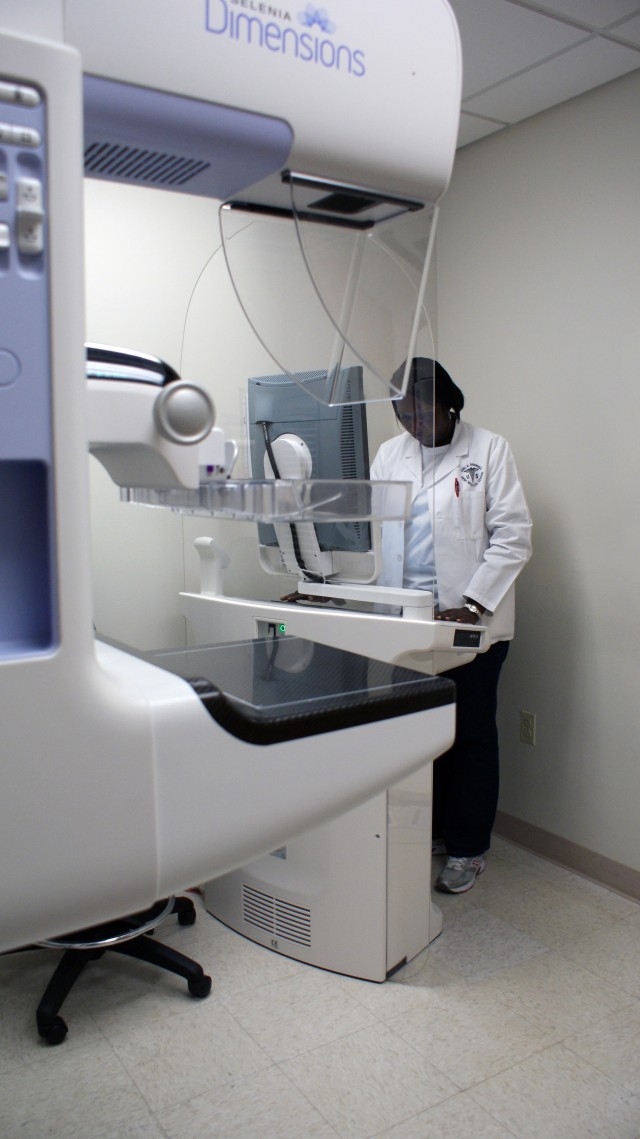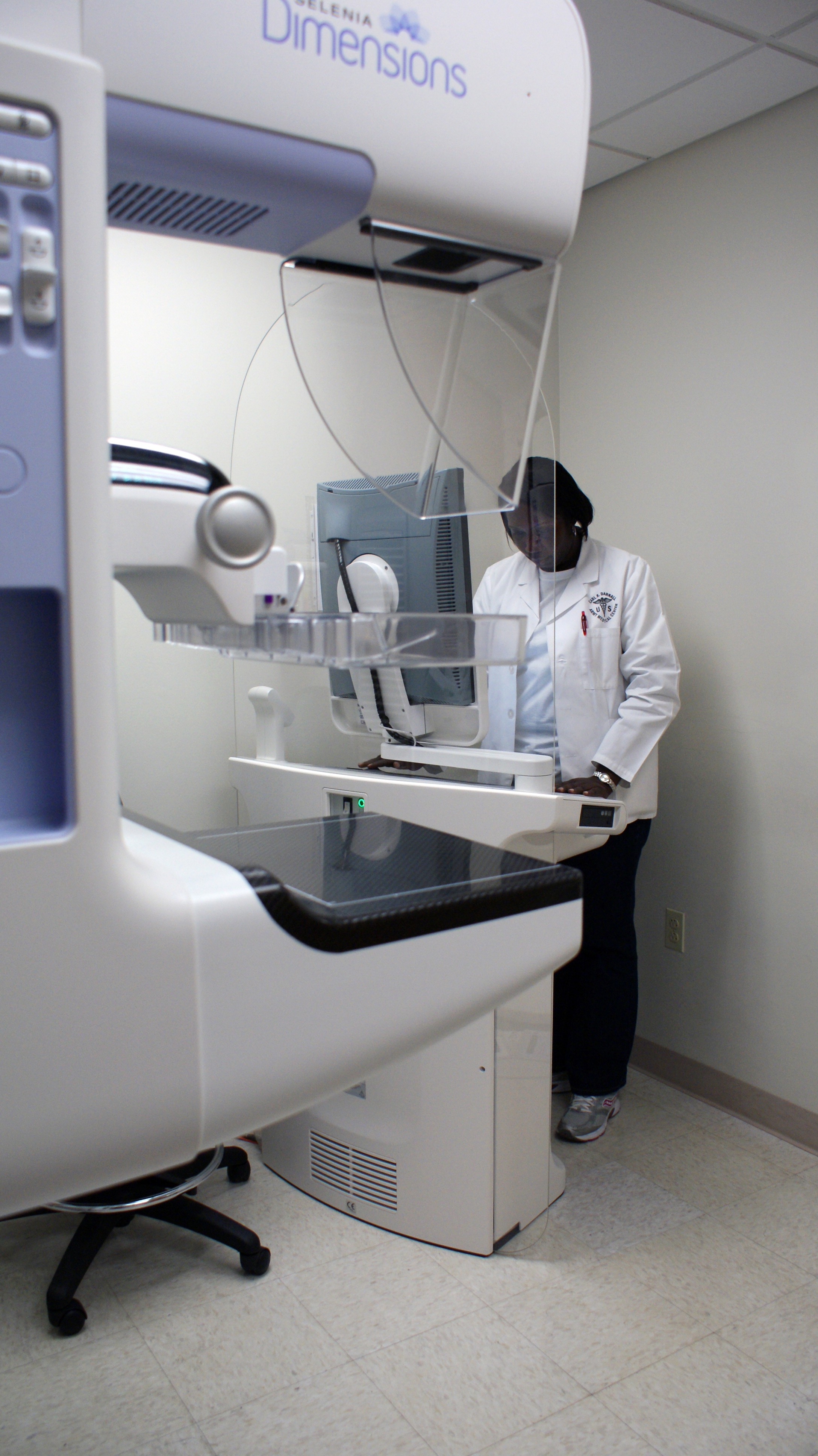FORT HOOD, Texas - The Radiology Department at Carl R. Darnall Army Medical Center unveiled the Hologic Selenia 2D Digital mammography unit in September that can help save lives.
This year, more than 40,000 people have died from breast cancer and more than 200,000 patients nationwide have been diagnosed with the disease.
CRDAMC's digital mammography machine is a new tool Fort Hood Soldiers and other beneficiaries can use to combat those fatal statistics.
"The computer picks up things that it might think are cancer and brings them to our attention," said Dr. (Maj.) Billy Wade Mahaney, chief of Radiology and officer in charge of the Mammography Section. "We can compare them with old studies or just our experience and say, 'Yes, I think that might be something we need to work up further, or no, that's been there for the past 20 years and it's nothing that we need to worry about.'"
Film mammograms have been conducted for decades, but digital mammography is new for the 21st century, and Mahaney said the digital technology is being implemented in almost every military medical facility. That is a benefit for patients who move frequently from duty station to duty station.
"The images are more transportable between health care facilities," said Mahaney. "We used to make copies of films and they were poor quality. The transportability of the [digital] images increases their diagnostic value."
Another benefit to the digital machine is quicker exams. Mahaney said patients should be in and out of the exam room in 15 minutes. With the old machines, technicians had to develop the film and ensure the images were of high quality.
"Now, as soon as we shoot the image, it pops up on our screen and we can determine if it's a quality image and move on to either the next image or the exam will be complete," said Mahaney.
"It is slightly quicker, so patients are uncomfortable for less time," he added.
For patients who don't have increased risk factors, Mahaney recommends women have their first mammogram at age 35 to set a baseline. Then, they should return for their annual screening beginning at age 40.
"Some recent medical studies indicated that mammography may not provide the cancer survival benefits that we thought they were getting from increased early detection," said Mahaney. "Those studies have been isolated.
"There have been multiple studies that demonstrated increased survivability with early detection, extending people's lives with early detection. Some researchers claim that increased survival may be due to better treatment, but we are still detecting the cancer early. It is unclear if early detection or better treatment provides the most benefit. For my spouse or my mother, I want both-early detection and better treatment," he said.
Before scheduling a mammogram, Soldiers and family members need to get an order from their primary care provider or civilian physician. Retirees are also encouraged to use CRDAMC's other imaging services.
"We can do retiree mammograms, x-rays, ultrasounds and CT scans. All of those we're happy to do, and have state-of-the-art equipment. Patients need to have their primary care provider or their physician fax us an order or give them an order to bring to the CRDAMC Radiology Department, and then we can take care of all their imaging needs here," said Mahaney.
In honor of National Breast Cancer Awareness Month, patients who have mammograms at CRDAMC in October will receive a special Breast Cancer Awareness goodie bag, while supplies last. CRDAMC is also promoting awareness Oct. 1 at the Courses of Clear Creek on Fort Hood. The Department of Surgery and Women's Health Center will have a display booth beginning at noon.


Social Sharing